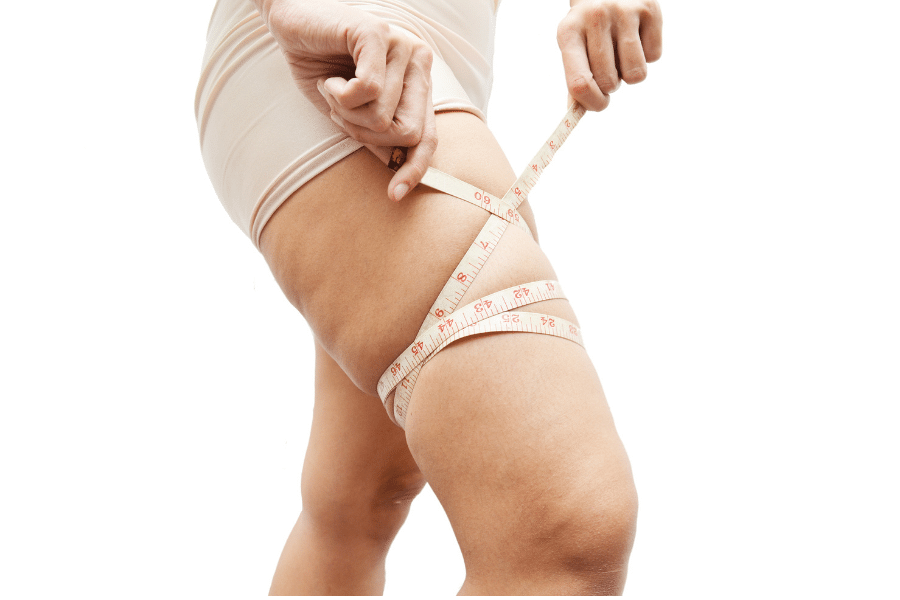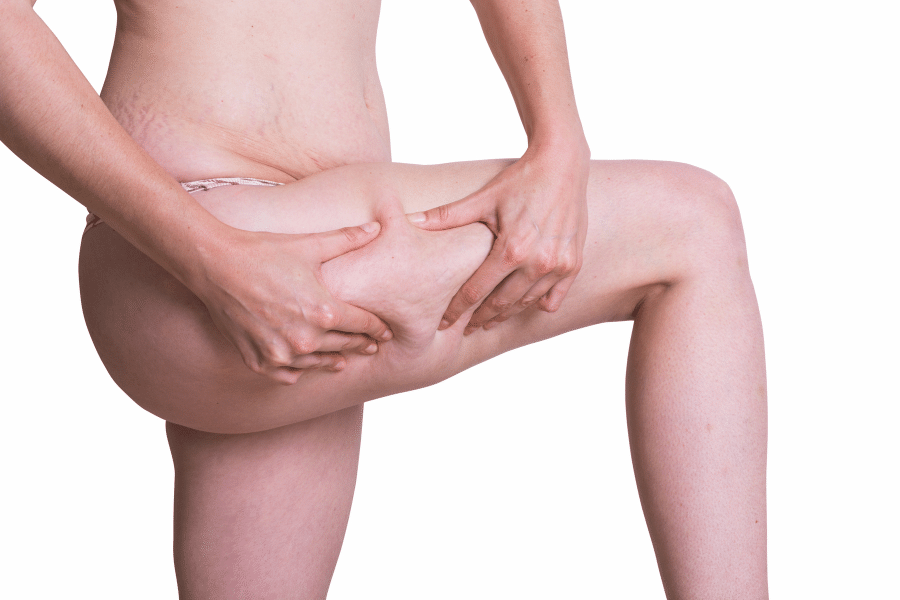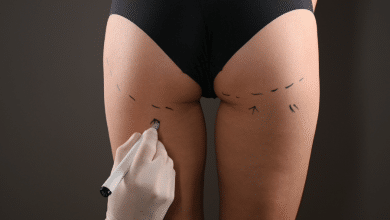Leg Lift Surgery

Leg lift surgery is a plastic surgery procedure to remove sagging or loose skin. It is generally preferred for sagging problems in the legs due to aging, weight loss or genetic factors.
Leg lift surgery is usually performed under general anesthesia and takes about 2-4 hours. During the procedure, excess skin and adipose tissue are removed and the leg area becomes firmer and shaped. The healing process takes about 4-6 weeks and swelling, bruising and pain may occur in the leg area after the procedure. However, these symptoms decrease over time and it may take about 6-8 weeks to return to normal activities.
As with any surgical procedure, such as a leg lift, there are risks. These may include infection, bleeding, wound healing problems, reactions to anesthesia, and loss of sensation. Therefore, before having a leg lift, it is important to have a detailed discussion with a plastic surgeon and carefully consider the risks and benefits.
Leg stretching is an effective option for removing sagging in the leg area and can increase the patient’s self-confidence. However, as with any surgical procedure, it is important to apply it to the right patients with the right indications.
İçindekiler
What is Leg Lift Surgery?
Leg lift surgery is a surgical procedure to correct aesthetic problems caused by sagging, looseness or excess skin in the legs. This procedure is generally preferred for solving sagging problems that occur as a result of decreased skin elasticity after weight loss or aging.
During leg lift surgery, excess skin and fat tissue on the legs are removed and the remaining skin is tightened. The surgery is usually performed under general anesthesia and takes about 2-3 hours. You may need to stay in the hospital for a few days after surgery, and full recovery may take several weeks.
In addition to aesthetic problems in the legs, leg stretching surgery can also help solve physical discomforts caused by sagging and excess skin in the legs.

Who Can Have Leg Lift Surgery?
Leg lift surgery is usually performed in the presence of one or more of the following conditions:
Weight loss: After weight loss, sagging and excess skin may occur in the legs.
Aging: Due to aging, skin elasticity decreases and sagging of the legs may occur.
Genetics: Some people may genetically experience sagging and excess skin problems on their legs.
Pregnancy: During pregnancy, sagging and excess skin problems may occur due to edema and decreased skin elasticity in the legs.
Leg stretching surgery is performed for people who are uncomfortable with sagging, looseness or excess skin in their legs due to the presence of one or more of these conditions and want to correct these problems. However, it is important to consult your doctor before the surgery to determine the suitability of your health status and whether the surgery is suitable for you.

What are the Types of Leg Lift Surgery?
Types of leg lift surgery are:
Classic Leg Lift: Classic leg lift surgery is performed by removing excess skin and fat tissue from the upper part of the legs, around the groin area.
Inner Leg Stretching: Inner leg stretching surgery is performed by removing excess skin and adipose tissue from the inner part of the legs, starting from the groin area to below the knee.
Outer Leg Stretching: Outer leg stretching surgery is performed by removing excess skin and fat tissue from the outer part of the legs, starting from the hip area to the lower knee.
Full Leg Lift: Full leg lift surgery is performed by removing excess skin and fat tissue from the entire legs, starting from the hip area to the ankles.
Inner-Outer Leg Lift: Inner-outer leg lift surgery is performed by removing excess skin and fat tissue from the inner and outer parts of the legs.
Which of these surgical methods will be preferred may vary depending on the patient’s needs, skin quality and expected postoperative results. Before the operation, your surgeon will evaluate your condition and determine the most suitable surgical method for you.

How is Leg Lift Surgery Performed?
Leg stretching surgery can be performed with different techniques depending on the needs of the patient and the scope of the surgery. But in general, the following steps are followed:
Anesthesia: Before the operation, the patient is anesthetized with the appropriate anesthesia method. General anesthesia is generally preferred.
Making Incisions: The incisions required for surgery are usually made around the groin area or the kneecap. The size of the incisions may vary depending on the scope of the surgery and the procedure to be performed.
Removal of Skin and Fat Tissue: After incisions are made, excess skin and adipose tissue are removed. The surgeon performs this procedure according to the predetermined surgical plan.
Skin and Tissue Arrangement: After the removal of skin and adipose tissue, the remaining skin and tissues are regulated. After the surgery, the patient’s legs gain a tighter and shaped appearance.
Making the Sutures: After the tissue arrangement is completed, the incisions are closed and the stitches are removed.
Recovery and Post-operative Care: After surgery, the patient may need to wear a special corset to support their legs. The healing process can vary from person to person and usually takes a few weeks. In the postoperative period, it is important to follow the instructions given by the doctor and to make regular check-ups.
Leg lift surgery is an operation that varies according to the scope of the surgery and the needs of the patient. Your surgeon will give you detailed information about how the surgery will be performed before the surgery.

After Leg Lift Surgery
The recovery period after leg lift surgery may vary depending on factors such as the patient’s general health status, the method and extent of the surgery. But usually the following steps are followed:
Hospital stay: You may need to stay in the hospital for a few days after the surgery. During this time, you will be closely monitored to prevent bleeding, infection and other complications.
Pain control: Post-operative pain is normal and can be controlled with prescription pain relievers.
Removal of stitches: In some cases, the stitches can be removed after a few weeks.
Exercise: Intense activities may need to be avoided for several weeks after leg lift surgery. However, doing regular light exercises according to your doctor’s instructions can speed up the healing process.
Edema and bruises: Edema and bruises are normal after leg lift surgery and usually subside within a few weeks.
Recovery time: Recovery time varies from person to person but can usually take from a few weeks to several months.
Your doctor will explain in detail what you need to do in the post-operative period and will follow the progress of your healing process by making regular follow-up visits.

Are There Any Side Effects or Harms of Leg Lift Surgery?
As with any surgical intervention, such as a leg lift, there may be some side effects and risks. These may include:
Bleeding and infection: There is a risk of bleeding and infection in the postoperative period. Your doctor will explain to you which symptoms are normal in the postoperative period and which may be signs of infection.
Pain: Post-operative pain is normal and can usually be controlled with medications.
Bruising and swelling: Bruising and swelling are normal after leg lift surgery and usually subside within a few weeks.
Stitch lines: Stitch lines may occur on the legs after surgery. However, over time, these seam lines will fade and become less obvious.
Thrombosis: Being inactive for a long time can increase the risk of thrombosis in the legs. Therefore, you may need to get up early after the surgery.
However, it is known that leg lift surgery is generally a safe procedure and gives good results. It is important to make sure that your doctor will discuss the possible risks with you in detail before surgery.

Frequently Asked Questions About Leg Lift Surgery
How many hours does leg lift surgery take?
The duration of the leg stretching surgery may vary depending on the type of surgery, the general health status of the patient, how wide the legs are stretched, and the facilities of the hospital where the surgery will be performed.
Generally, leg lift surgeries take between 2 and 4 hours. However, in some cases, the operation time may be shorter or longer.
Before the surgery, your doctor will discuss with you the expectations, duration and risks of the surgery in detail.
Do I need to lose weight before leg lift?
Before the leg lift surgery, it depends on factors such as whether the patient needs to lose weight, the general health of the patient, how wide the legs should be stretched, and skin elasticity.
If the patient’s body mass index is at the level of obesity, his doctor may recommend that the patient lose weight. Because obesity can affect the recovery process after surgery by reducing skin elasticity and lead to undesirable results.
However, there may be cases where you do not need to lose weight before leg lift surgery. Therefore, it is important to have a detailed discussion with your doctor about whether you need to lose weight before the surgery.
Will there be any scars after leg lift surgery?
After the leg lift surgery, since the excess skin is removed, surgical scars may occur. However, these scars can be reduced with regular care in the postoperative period and heal over time.
The technique used in leg stretching surgery and the width of the area where the surgery is performed also affect the scar formation process. Generally, scars may occur after incisions made on the inside of the leg, between the thigh and knee.
Your surgeon will determine the appropriate treatment plan to minimize post-operative scarring. Among these treatments; There may be methods such as special creams or tapes used in the post-operative period, massage, exercises, and laser therapy.
However, it may not be possible for the traces to disappear completely. However, it is possible to make the scars less noticeable with the methods applied to reduce the size of the scars and make them less obvious in the post-surgical period.

What is the Price of Leg Lift Surgery?
The price of leg lift surgery may vary depending on many factors. Prices may vary depending on the location of the hospital or clinic, the surgeon’s experience, the width of the area where the surgery will be performed, the technique used, the type of anesthesia and post-operative care.
However, the price of leg lift surgery is usually higher than other cosmetic surgery procedures. Prices may vary depending on factors such as the extent of the surgery, technique and materials used.
Leg lift surgery prices in Turkey can vary between approximately 7.000-15.000 TL. However, it is important to go through a consultation process to determine the exact prices and to do a price research according to the place where the surgery will be performed. Also, some health insurances exclude cosmetic procedures such as leg lift surgery, so it may be helpful for patients to check their insurance plans beforehand.




